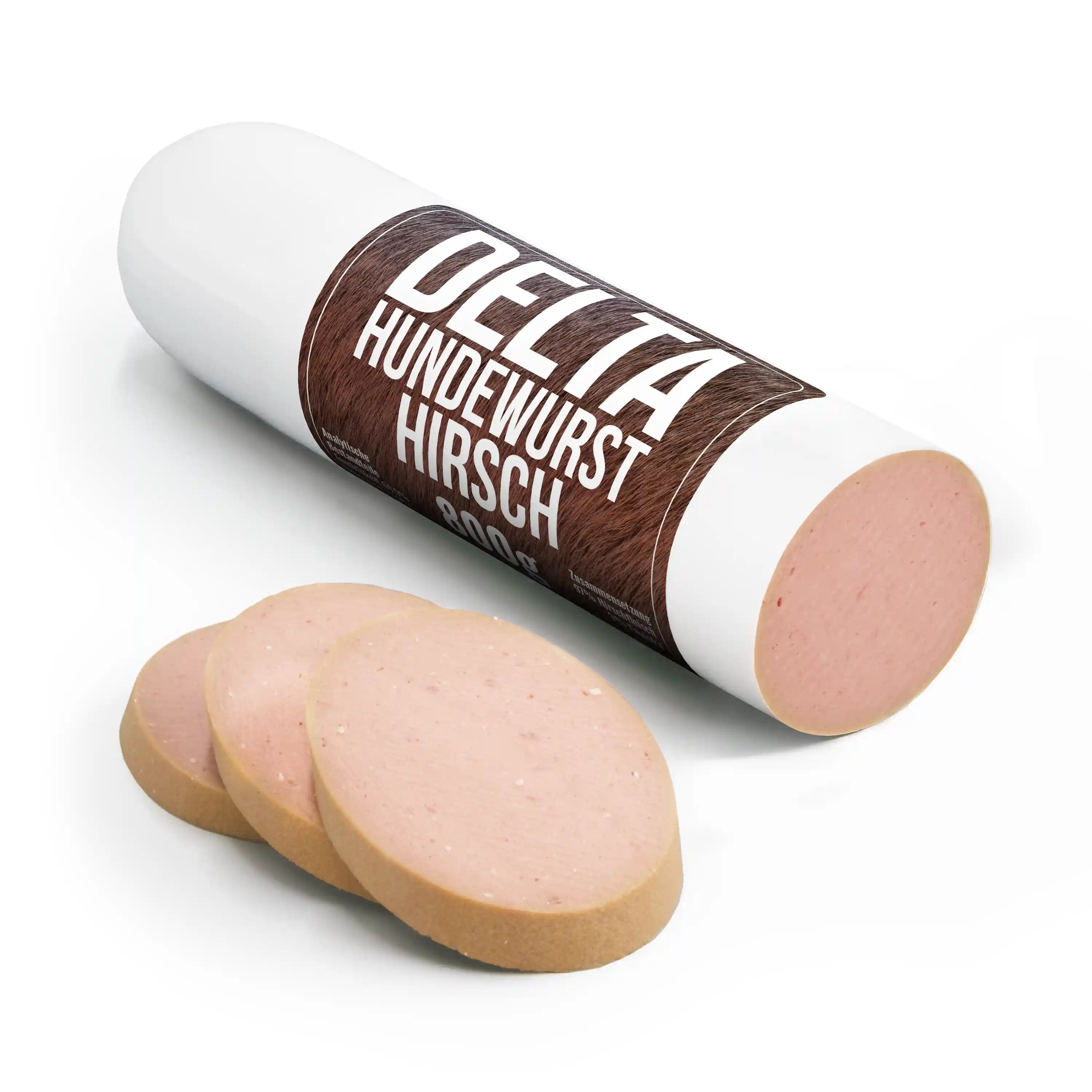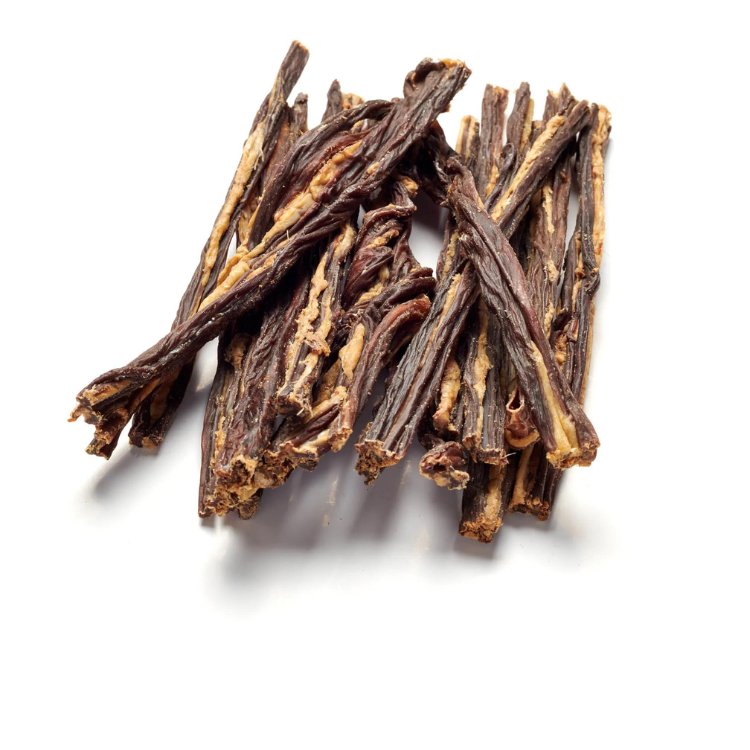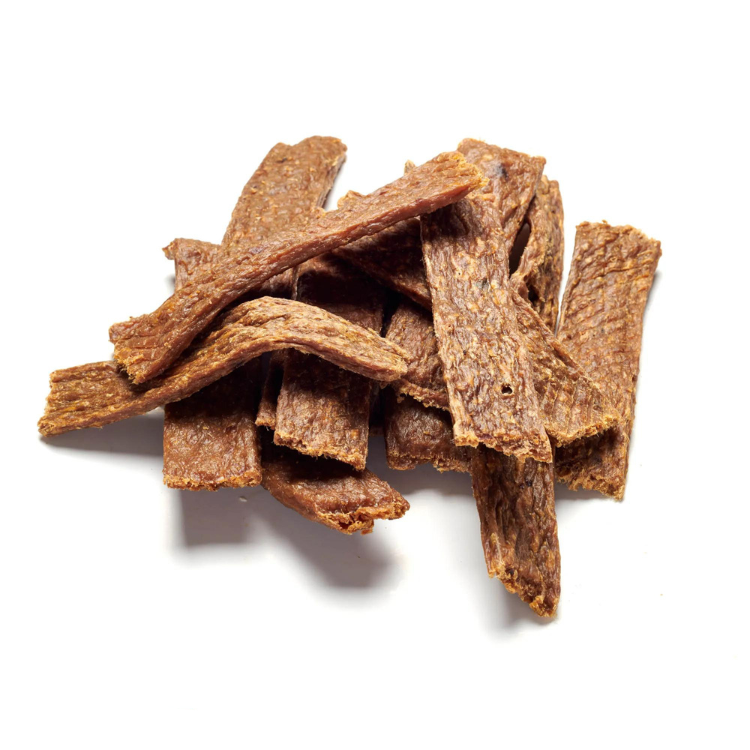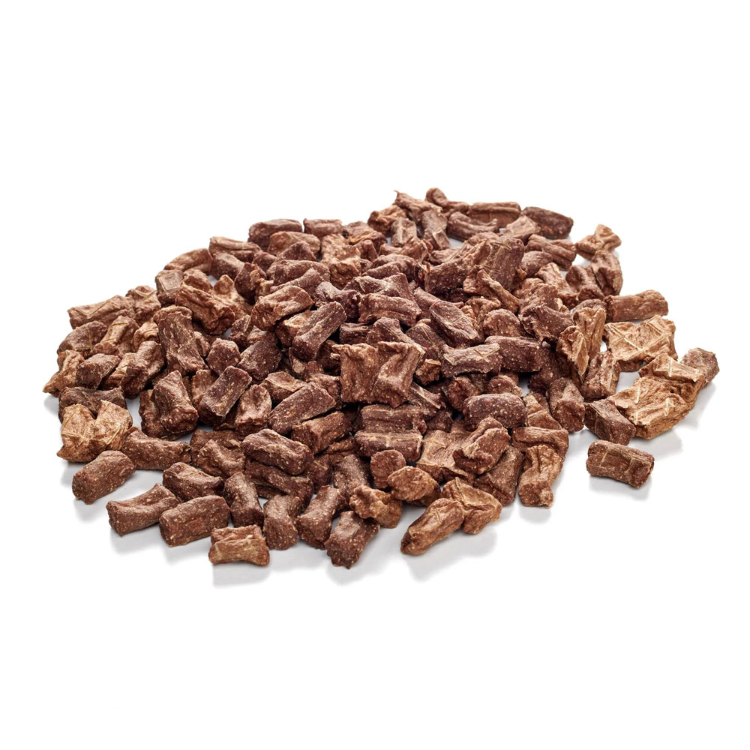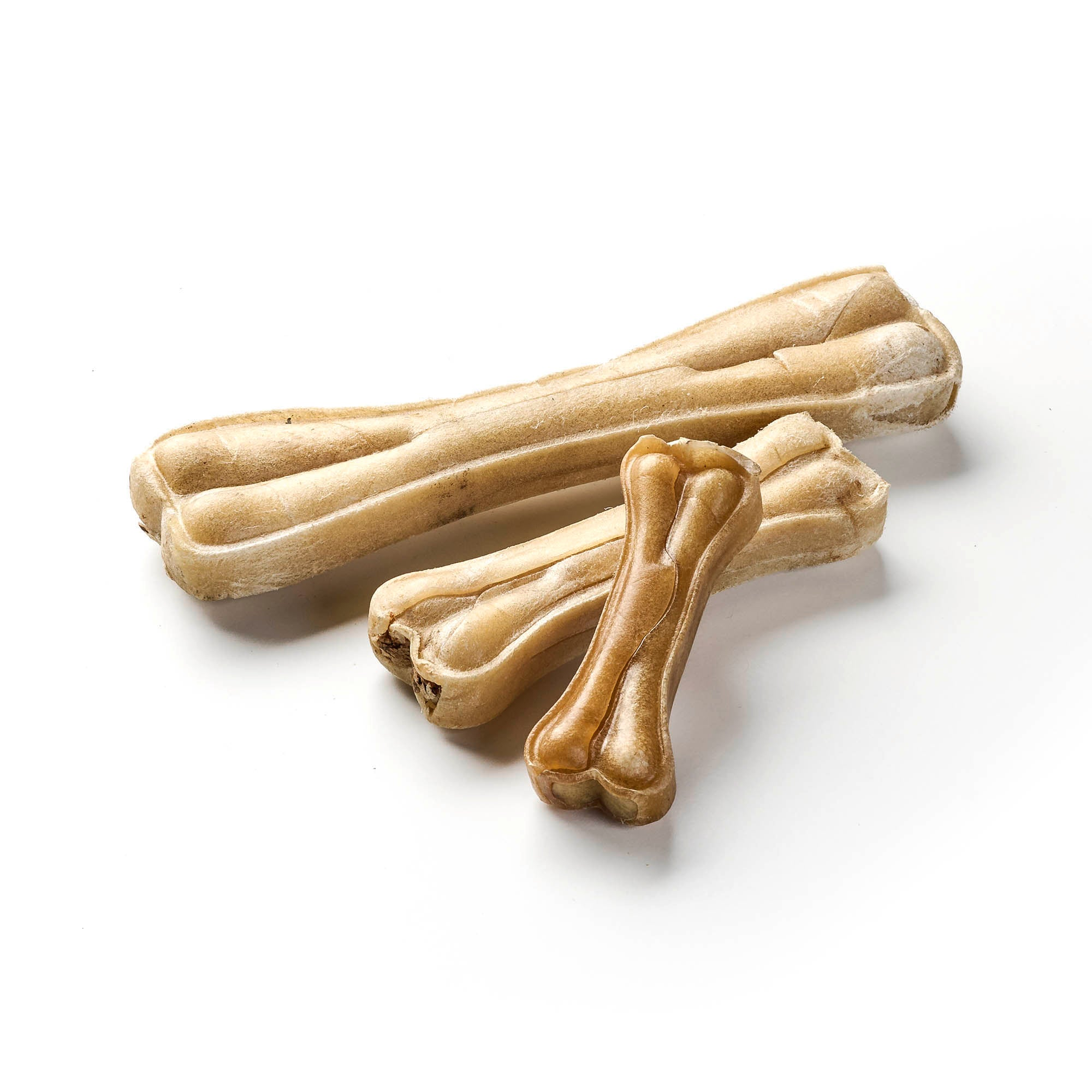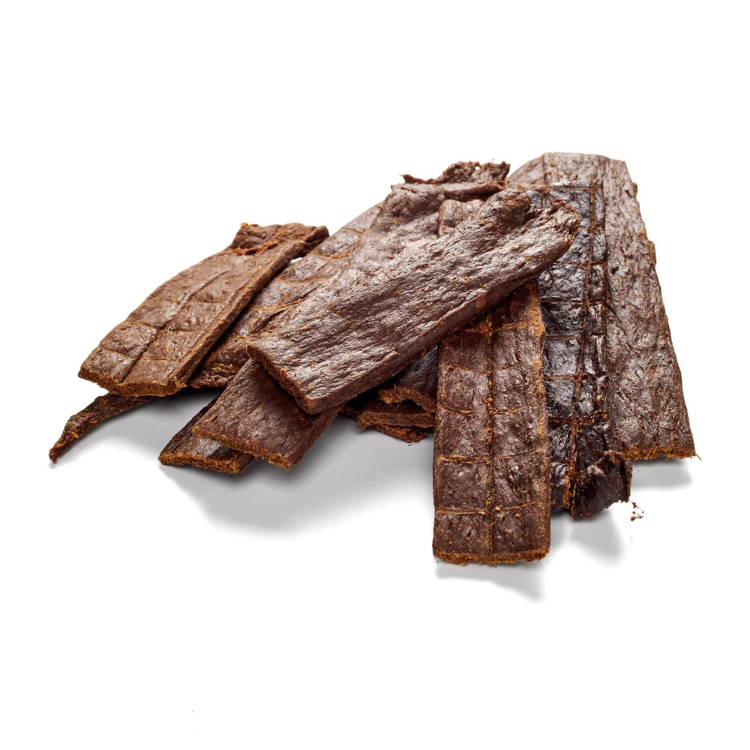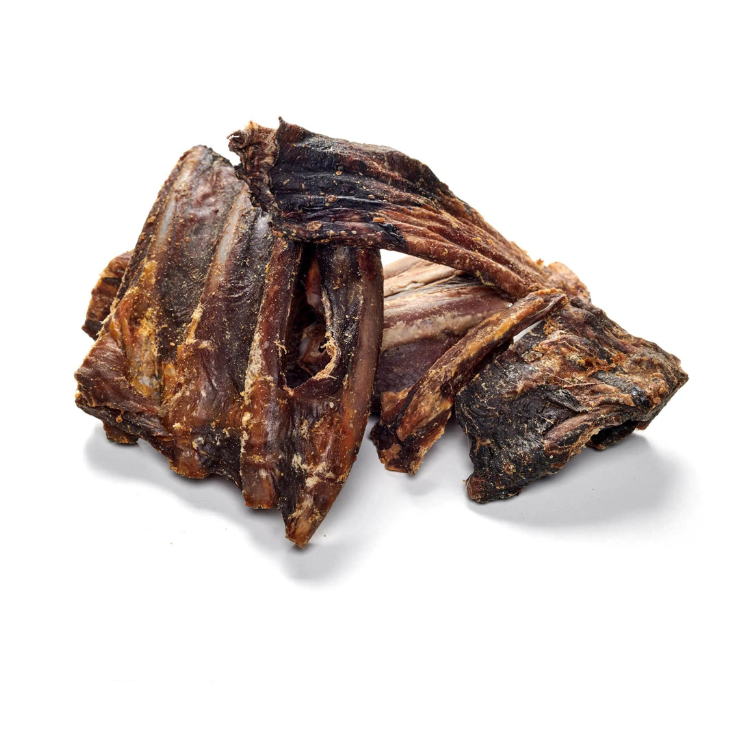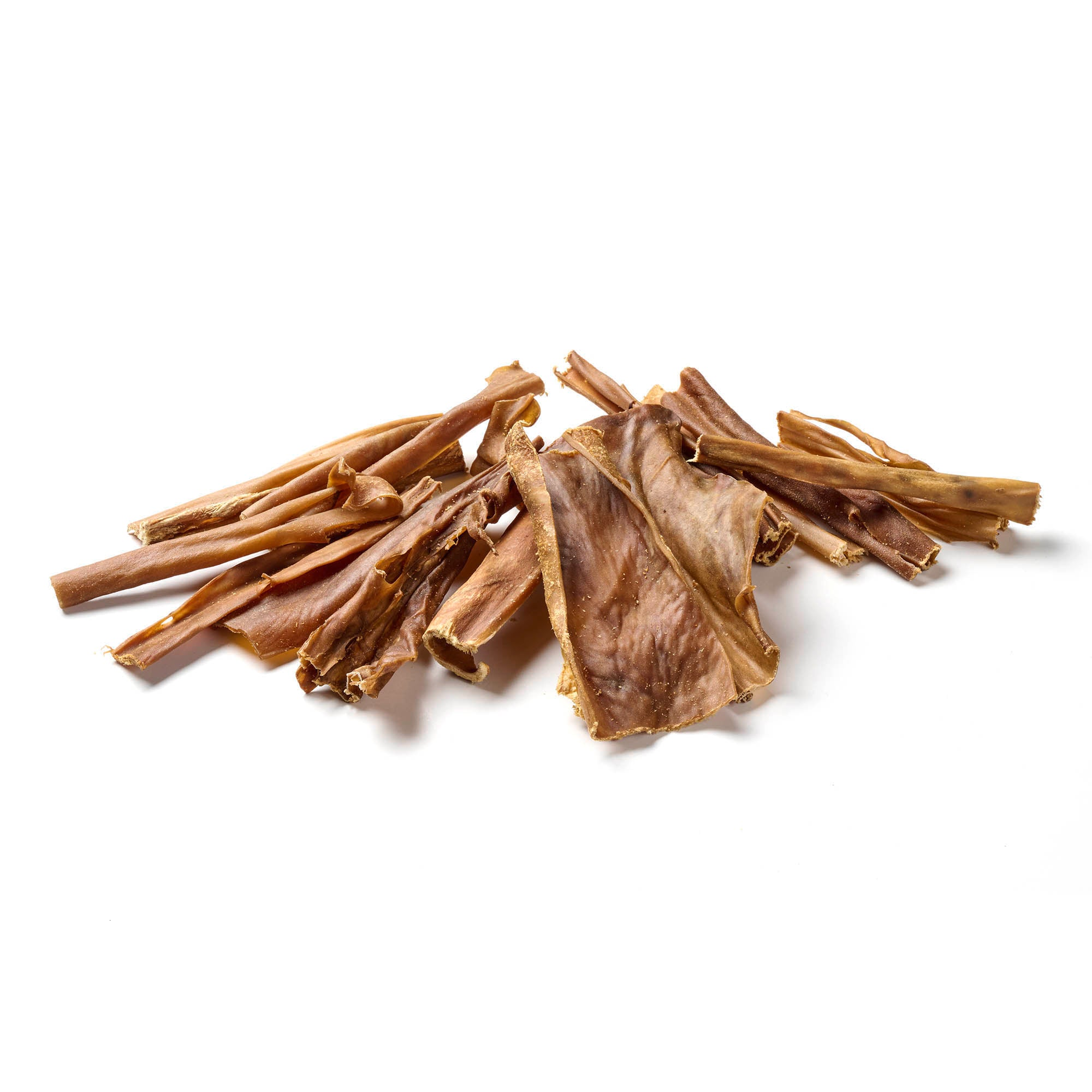
Everything about dry food for dogs
Share
Dry food is more than just a meal in a bowl - it's a world of its own, captured in small, crunchy bites. This everyday food for our four-legged friends has evolved from a practical necessity to a complex product that encompasses both nutritional science and culinary art. But behind every bite there is a story: from selected ingredients to scientifically coordinated composition to precise production.
Contents: Everything about dry food for dogs
- What is dry food?
- Advantages of dry food
- Choosing the right dry food
- Common concerns and myths about dry food
- Practical tips for feeding with dry food
- Conclusion
Delicious chews for your faithful companion now available!
The evolution of dry food reflects changing views on pet nutrition and care. Perhaps once seen as a simple food option, it is now valued as an essential part of a balanced diet that can improve the quality of life of our dogs. The variety of shapes, sizes and flavors of dry food shows that it is much more than just "dog food." It is a response to the diverse needs and preferences of our pets - a culinary journey contained in every meal.
What is dry food?
Dry food has evolved far beyond its origins as a simple source of nutrition and is now one of the most common and strategically developed types of food for dogs . In its essence, it combines convenient storage and shelf life with a balanced composition that makes it a preferred choice for many dog owners.
Definition and description of dry food
At its best, dry dog food is made from a carefully balanced blend of different ingredients that are cooked together, dried and formed into small, crunchy pieces. It typically contains meat , grains, vegetables, and necessary vitamins and minerals for a comprehensive dog diet . These ingredients are chosen not only for their nutritional value, but also for their ability to develop a firm and crunchy texture during the manufacturing process.
Production process of dry food
The production of dry food is a sophisticated process that requires precision and scientific understanding to ensure a high-quality final product. As mentioned, the process begins with a careful selection and mixing of raw ingredients, which usually include proteins, fats, carbohydrates, vitamins and minerals in balanced proportions. These ingredients may include meat or meat by-products, grains, vegetables and various supplements, which together provide a complete and balanced diet for dogs.
After the ingredients have been mixed, the next step is extrusion, a process in which the mixed food is forced through an extruder nozzle using high pressure and high temperature. This step is crucial as it transforms the raw mass into a homogeneous, malleable mass, which is then cut into the characteristic small, dry and crunchy pieces. The heat during the extrusion process not only cooks the ingredients but also sterilizes the food, killing harmful bacteria and extending the shelf life of the food.
In contrast, cold-pressed dry food is processed at lower temperatures, which results in some heat-sensitive vitamins and enzymes being better preserved. This gentle processing method can help to better preserve the natural flavors and nutrients of the ingredients.
The extruded feed is then dried to reduce moisture content, which is critical for storage stability. Too high a moisture content would encourage the growth of microorganisms and affect the shelf life of the product. The drying process must be carefully monitored to ensure that the feed is dry enough to avoid mold growth, but also not too dry, which could compromise the nutrients.
After the food has reached the desired consistency and dryness, it is cut into specific sizes and shapes. This shaping is important not only for aesthetic reasons, but also to ensure that the food is easy to chew and digest for dogs of different sizes and ages. Finally, the food is cooled and packaged, using modern packaging technologies that preserve the freshness and nutritional quality of the food for months until it is eaten by the dogs.
Advantages of dry food
Dry food is very popular and there are of course several reasons for this. In addition to its long shelf life and easy handling in everyday life, it can also contribute to the health of dogs.
Long shelf life and easy storage
One of the most striking advantages of dry food is its long shelf life. Unlike wet food, which can spoil quickly after opening, dry food stays fresh for months and does not lose quality. Dry food is also very easy to store. It does not require any special storage conditions such as refrigeration, it just needs to be dry!
Contribution to dental hygiene through abrasive effect
Another significant benefit of dry food is its contribution to dogs' dental hygiene . The hard and crunchy texture of the food provides an abrasive effect when chewing - similar to chew toys . This property helps reduce plaque or tartar on the teeth and can also help reduce the risk of dental disease, thus minimizing the need for professional dental intervention.
Cost efficiency compared to wet food
Dry food is generally much more cost-effective than wet food. Not only is it cheaper to buy, but it also offers a higher energy density. This means that smaller amounts are enough to satisfy the dog. This efficiency leads to lower costs per meal and therefore an overall more economical option for dog owners. In addition, the ease of handling of dry food is a clear advantage when it comes to avoiding overfeeding and precisely controlling nutrition, which is especially important for dogs with special dietary requirements.
See also: How much does a dog cost? - We'll tell you
Choosing the right dry food
In a sea of options, where thousands of dry food types and brands vie for the favor of dog owners and the palates of their four-legged friends, the challenge is to find exactly the right dog food . Choosing the right dry food is not just a question of taste, but an important decision that significantly influences your dog's quality of life. It's about finding a food that is perfectly tailored to your dog's specific requirements - be it his age, weight, activity level or health issues.
Consideration of the dog’s age, weight and activity level
Dogs of different ages and breeds each have specific nutritional needs. For example , puppies of large breeds such as Great Danes or English Mastiffs require a nutrient-rich diet that supports their rapid growth while promoting healthy bone and joint development. Small breeds such as terriers , on the other hand, grow faster and reach their full size sooner, so they can transition to adult dog food sooner. However, they do require high-quality nutrients that help them use and store energy efficiently.
For older dogs , a low-calorie diet rich in fiber is beneficial to prevent obesity and aid digestion. This is especially important for large breeds that are prone to joint problems and where extra weight can further limit mobility.
In any case, the dog's weight plays a central role in food selection, as overweight dogs benefit from a diet that satisfies them without providing too many calories. Activity level is also a crucial factor; active dogs require a high-protein diet that meets their energy needs.
High-quality dog chews for your faithful companion can be found here!
Special food for dogs with special nutritional needs
Dogs suffering from specific health conditions such as allergies , kidney disease or other chronic conditions often require specialized food that takes into account their particular nutritional needs. Hypoallergenic dog foods that use alternative protein sources such as camel , reindeer or ostrich can help minimize allergic reactions. Diets with reduced protein, phosphorus and sodium are available for dogs with kidney disease, which help slow the progression of the disease, but professional advice from a veterinarian is recommended here.
Tips for evaluating dry food brands and products
When choosing the right dry dog food, it is crucial to decide not only on the brand but also on the quality and composition of the food. Here are some detailed steps you can follow to ensure you choose the best option for your dog:
Read customer reviews: Customer reviews can provide valuable insight into the actual quality and acceptance of the food by other dogs. Pay attention to comments on digestibility, allergic reactions, the energy level of the dogs after changing food and general satisfaction with the product. But also remain critical, because there are also false customer reviews, especially on large platforms!
Check the ingredients list: To ensure complete transparency, we at snack4pet.com print the exact amounts with percentages on the ingredients list - but not all manufacturers do this. The ingredients are often only listed by weight. This way you can at least estimate which ingredients are used. For optimal nutrition, high-quality proteins should be the first priority, as they are essential for your dog's health. Avoid foods that are dominated by fillers such as corn, wheat or soy, as these often offer less nutritional value and can cause digestive problems or allergies in some dogs.
Avoid artificial additives: Artificial colors, preservatives and flavor enhancers are often found in low-quality foods. These can be harmful in the long term and have unwanted side effects. Look for foods that use natural preservatives such as vitamin E (often listed as tocopherols).
Check nutritional information: Make sure the dry food meets the nutritional guidelines set by the German Kennel Club (VDH) or the Federal Ministry of Food and Agriculture (BMEL) . The AAFCO (Association of American Feed Control Officials) also offers valuable guidelines. These standards help ensure that the food contains all the necessary nutrients in the right amounts to keep your dog healthy.
Consider special dietary needs: If your dog has special needs, such as weight management, a hypoallergenic diet, or food for medical conditions, look for products specifically formulated for those conditions.
Seek medical advice: Your veterinarian can be a valuable advisor when it comes to choosing a dry food that is good for your dog's health. He or she can recommend specific products tailored to your dog's health, age and activity level.
By following these detailed tips, you can make an informed decision that will help promote your dog's health and well-being.
Common concerns and myths about dry food
There are many myths and concerns about dry dog food that need to be addressed. Often these stem from misconceptions or outdated information that has developed over the years in the dog food discussion.
Clarifying myths and misinformation
A common myth is that dry food is less nutritious than wet food. However, this is not generally the case. However, as the name suggests, wet food has significantly more water, which can be particularly helpful in meeting the dog's fluid needs in hot temperatures.
But high-quality dry food is formulated to contain all the necessary nutrients in the right amounts to meet a dog's daily needs. Modern manufacturing processes ensure that the nutrients are retained and the food optimally supports the dog's health needs.
Another common misconception is that dry food automatically leads to weight gain, when in fact it depends on the dog's calorie intake and activity level. It is also often overlooked that wet food can help meet the dog's hydration needs in hot temperatures due to its higher water content. However, this does not mean that dry food is less beneficial - it is simply a matter of finding the right balance and supplementing it with plenty of fresh water.
Discussion about grains in dry food
The use of grains in dry dog food is actually controversial. While some studies suggest that grains can be an important source of energy and provide fiber that supports digestive health, some dog owners prefer grain-free dog food , especially if your dog exhibits allergies or food intolerances. It's important to understand your dog's individual nutritional needs and choose a food that meets his specific health needs rather than following blanket trends.
Moisture content and its effects on the health of the dog
Another important issue is the moisture content of dry food. Since dry food has a low moisture content, it is crucial that dogs drink enough water in addition to eating dry food. Inadequate water intake can lead to dehydration and related health problems. Dog owners should ensure that fresh water is always available.
Not sure? Check out: How much water do dogs need daily?
Conclusion
The world of dry dog food has evolved far beyond the original idea of a simple meal. Today, it represents a sophisticated combination of nutritional science and culinary art that responds to the diverse needs and preferences of our dogs. The variety of shapes, sizes and flavors shows that dry dog food is much more than just "dog food" - it is a response to the individual requirements of each dog.
By carefully selecting and adjusting dry food, you can ensure your dog receives a balanced diet that supports his health and vitality. Taking into account factors such as age, weight, activity level and special dietary needs is crucial. At the same time, addressing myths and misconceptions will help you make informed decisions that serve your dog's wellbeing.
Dry food not only offers practical advantages such as long shelf life and easy storage, but also contributes to your dog's dental hygiene and general health. With the right choice and use, you can significantly improve the quality of life of your four-legged friend and promote a strong, healthy bond.
Overall, dry food is a versatile and valuable option in dog nutrition, which impresses with its constant development and adaptation to modern findings in animal nutrition.
Reward your best friend with our dog treats!

